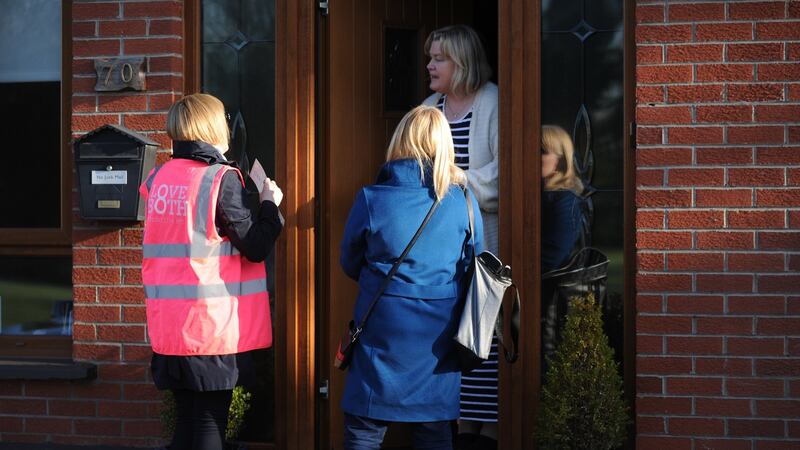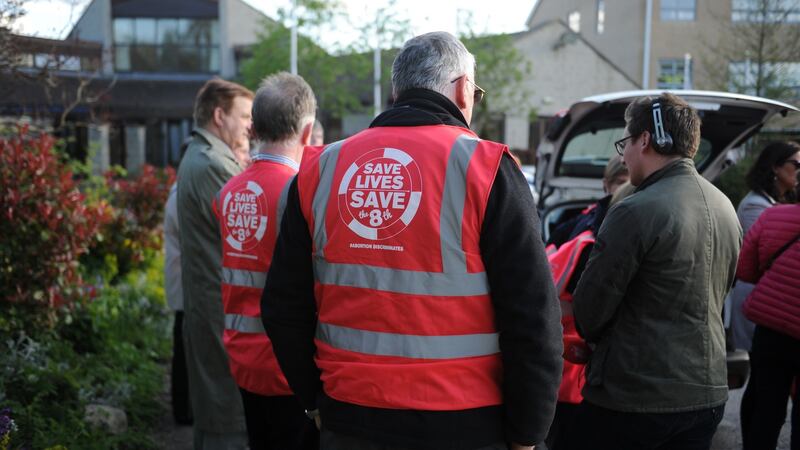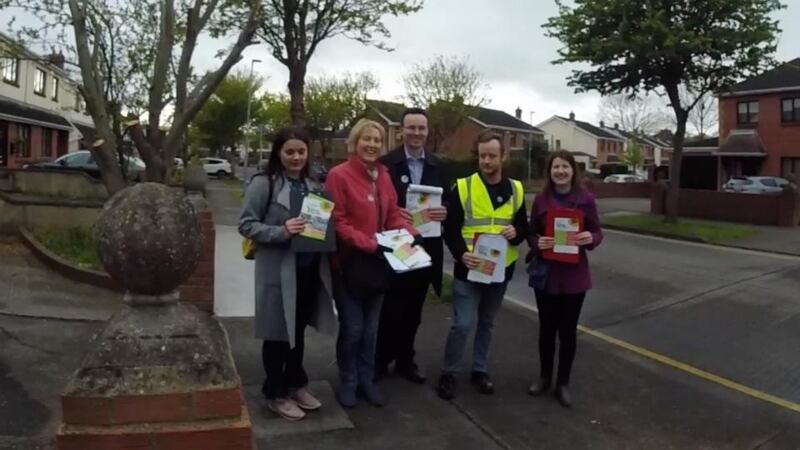In suburban Castleknock the cherry blossoms are out, there is the smell of freshly-cut grass and people-carriers are parked in many driveways.
Middle-class areas of Dublin West are expected to be a bulwark for the Yes campaign in the referendum. This is the constituency of Taoiseach Leo Varadkar. It is also one of the youngest constituencies in the country.
It is mixed, split between middle-class and working-class areas, with a high percentage of residents who were born outside Ireland. There are No voters here too but, overall, it would be a surprise if it did not go strongly Yes.
When you are on the ground, one very good way of gauging the strength of one side is to follow the campaign on the other side. On Monday, accompanying the No campaign around Laurel Lodge, it became evident that Yes is trending in this suburb. The following night, in Porter’s Gate, the pattern was the same. But late in the evening there was a sting in the tail – a surge of people who did not know (and seemed to be veering No), and some definite Nos. But overall, on both nights, in both estates, this was Yes country.

Not thrilled
On that sun-dappled evening, a group of 20 Save the Eighth campaigners gathered outside a local church at teatime. Because of a mix-up, they were not aware The Irish Times would be joining them. The confusion was cleared up, but some were not thrilled with the prospect.
Early in the evening, canvassers came across Declan Fitzpatrick on Castleknock Avenue, who was an adamant No voter. He said he took exception to campaigners being described as anti-abortion. “They are pro-life, they want to protect human life,” he said.
As they worked their way through the estate, you could see the tot of Nos add up. But among them were a fair few Yeses, and adamant Yeses at that. A middle-aged man who answered the door said he was “pro-life” but would be voting Yes. His argument was that if they were consistent, No campaigners should also be calling for the Repeal of the 11th and 12th amendments of the Constitution, which provide for travel and information on abortion.
‘Abortion is a reality’
“The reality is that they are travelling to England for abortions. We may not like it but abortion is a reality and I’d rather it to be regulated here rather than exporting it,” he argued.
A while later, a man slammed a door rudely on canvassers. Another, a 30-something man, came to the door, a young child in arms, his work shirt loosened at the collar.
“I am voting Yes. I could be here all night explaining the issues to you, but that’s what I’m doing,” he said politely.
Another women at a doorstep, in her 60s, said if her daughter had a fatal foetal abnormality, she would be on the plane in the morning.
A young mother tells them she has been on all of the Repeal marches. Another householder, Anthony Doyle (34) says: “Women should have a choice and be able to police their own bodies.”
Is this typical? Evelyn Porter, a young No volunteer, argues it is not such a straight proposition, and there have been big variances. “When I started campaigning, I was sure that Dublin would all be Yes,” she says. “I could not believe it, but in some areas we have canvassed [in Dublin West] it has been 70 per cent No.”

One-in-five statistic
At most doors, people give no indication one way or the other. Canvassers patiently explain their position, asserting that what will be introduced is abortion on demand, repeating the one-in-five statistic that features on their posters.
One theme that resonates with householders is that people can’t trust politicians. There is some blowback, however, from people who don’t like some No posters.
“It has gone reasonably well,” sums up campaigner Brian McCaulfield at the end of the night. “We have campaigned in some [other] areas where No is in a majority, but have generally found that a huge amount of people are undecided.”
McCaulfield, a mild-mannered man, believes the overall outcome will be close, but points to Yes support slipping in the polls.
A senior No person later says middle-class Dublin has been a weak area, but says the campaign is striking a chord in working-class areas in the capital.
John McCullen cheerfully outlines the kind of effort that has been put in. He started canvassing in Corduff (near Blanchardstown) about six weeks ago, and has done every Monday and Tuesday night, and supermarkets on Saturdays. He believes the tide is turning in the No direction.

On the Yes campaign trail
The following night, a similar number of Yes campaigners spread out across Porter’s Gate, a similar leafy suburb. The number of definite Yeses is striking. “We were talking about it earlier and [we] are vociferously Yes,” in this house, says a woman.
Aoife Doyle (18), comes to the door to say she will mark Yes in her first ever vote. “Every woman must have concern over her own body.”
“We are a houseful of Yes votes,” said student Aisling Dungan.
Unlike on the No side, there are politicians in the canvassing team, including Labour TD Joan Burton and Green Party chair Roderic O’Gorman, as well as an experienced Labour member, John Walsh.
When campaigner Susanna Bennett tallied her responses on the doorstep, they had almost as many Yeses as Don’t Knows, with few Nos. That trend, Walsh said, is usual. Similarly, O’Gorman’s tally showed 207 Yeses, 43 Nos and 91 undeclared.
Asked about the No side’s assertion that Yes campaigners never use the term abortion, Walsh disagreed. “We talk openly about abortion and about abortion services. We are making the case for abortion in certain circumstances.”
It was not one-way traffic. Towards the end, Joan Burton and her daughter Aoife Carroll spent a lot of time on doorsteps with people who are unsure, or are trending towards No.
On the verge of dying
Burton quoted obstetrician Peter Boylan’s comments that women must be on the verge of dying before intervention is allowed under the Eighth. “I don’t think any woman deliberately goes down this route,” she said to a woman.
“I am struggling with it,” said one woman at the doorstep. “Are we talking about a clump of cells or a living human being? It’s just not black and white. I can also say I do not trust politicians.”
Another woman complained that the actual termination is “sugar-coated”, and many people don’t know how horrible it is. A woman with a daughter with special needs also expressed reservations. A young man said straight out that he was voting No, and is polite but unwavering after a short conversation.
Burton, who has long experience here, gave what looked like a solid prediction. “I am very confident that there will be a Yes vote of at least 60 per cent here,” she said. In these estates at least, the indicative figures seem to bear her out.










